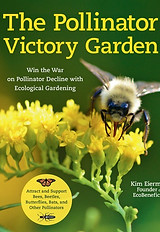Heading 1
In Grow Your Own Spices, author and spice-growing gardener Tasha Greer hands you everything you need to know to grow a thriving spice garden, with practical tips and in-depth advice on cultivating over 30 different spices. Start with easy-to-grow seed spices first, such as sesame seeds, fennel, and cumin, then graduate to more challenging spice varieties, such as star anise, cinnamon, and nutmeg.
Let Grow Your Own Spices show you how to spice up your garden, your plate, and your health, with your own fresh, homegrown spices!
Let’s face it: weeding is far from a homeowner’s favorite chore. But not everyone can afford to hire a landscape crew to keep the weeds at bay, and spraying chemical herbicides isn’t a smart solution for eco-conscious homeowners or pet parents. If that’s the case for you, the weed control prevention and control strategies outlined here by author Tasha Greer will have you growing flowers, vegetables, shrubs, and trees with little to no weed competition. Tasha’s organic approach hands you methods for both preventing weeds early in the growing season and managing weedy intruders year-round.
The passion and urgency that inspired WWI and WWII Victory Gardens is needed today to meet another threat to our food supply and our environment--the steep decline of pollinators. Pollinators are critical to our food supply and responsible for the pollination of the vast majority of all flowering plants on our planet. Pollinators include not just bees , but many different types of animals, including insects and mammals. Beetles , bats , birds , butterflies , moths , flies , and wasps can be pollinators. But, many pollinators are in trouble , and the reality is that most of our landscapes have little to offer them . Our residential and commercial landscapes are filled with vast green pollinator deserts, better known as lawns. These monotonous green expanses are ecological wastelands for bees and other pollinators. Learn how to transition your landscape into a pollinator haven by creating a habitat that includes pollinator nutrition, larval host plants for butterflies and moths, and areas for egg laying, nesting, sheltering, overwintering, resting, and warming.
Learn to bake healthy, wholesome loaves and sweet fermented buns using wild yeasts cultivated from fruits, flowers, vegetables, and plants.
Like sourdough baking, yeast-water or botanical bread baking draws on the amazing process of fermentation and the ancient art of breadmaking. The method described in this book, while unique, is informed by the author’s knowledge of both bulk fermentation and sourdough bread baking, resulting in an innovative process and delicious, nutritious results.




